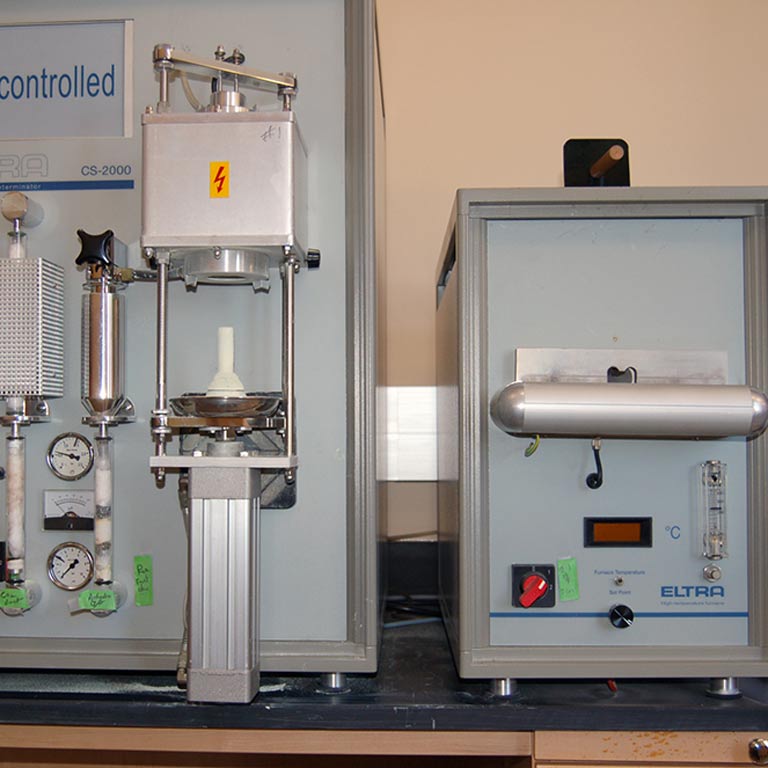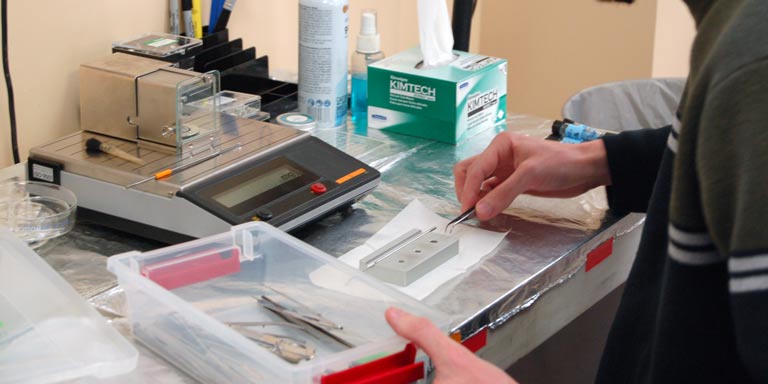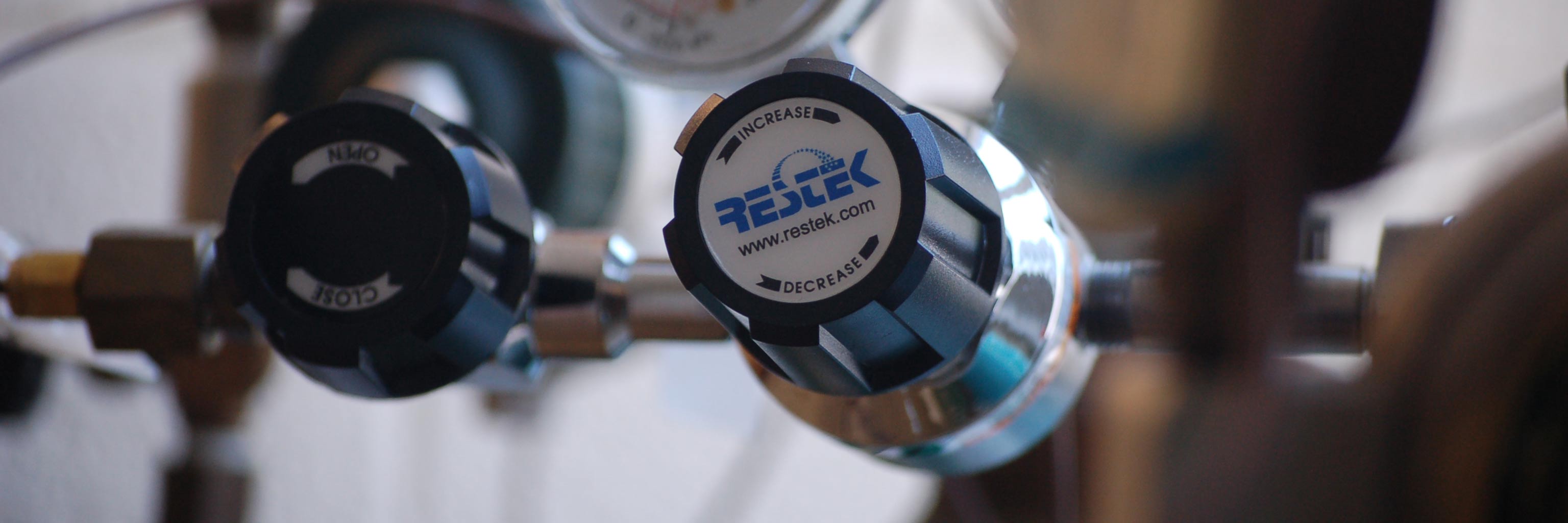Centers, Labs, & Resources
Centers, labs, + resources
Research laboratories
- Paleontology Collection
The IU Paleontology Collection is formal public trust research repository for fossil material. Its 1.3 million specimens document past research projects and serve as a resource for new synthetic research on stratigraphy, paleoecology, evolution, geochemistry, and the biotic effects of climate change for researchers at Indiana University and in the international scientific community.
- Petrology Microscopes
Our department has a set of rooms dedicated to optical microscopy and photo-imaging. Research-grade polarizing microscopes allow examination of whole thin sections at the scale of 1 to 1, scaled to magnifications 40X.
Analytical laboratories + resources
- Analytical Geochemistry Labs
Analytical Geochemistry Laboratory (MSBII 453) is a department facility that is dedicated to the inorganic geochemistry of geologic materials (water, sediments and soils, and rock).
- Fission Track Lab
-
Our laboratory permits the optical identification of fission tracks using an Olympus BX53 Microscope fitted with a motorized Ludl stage system, drawing tube, and an SC50 digital camera. Fission track analysis and length measurements are conducted using the FTStage4 software (on a dedicated Lenovo PC) and track pad system designed by Jasper Canyon Labs.
- Stable Isotope Research Facility
The Stable Isotope Research Facility (SIRF) in the Department of Earth and Atmospheric Sciences houses four isotope ratio mass spectrometers dedicated to analysis of H, C, N, O, and S.
- Electron microprobe
-
Our CAMECA SX-50 Electron Microprobe is for research and teaching activities in geochemistry, petrology and geochronology.
- Scanning electron microscope
-
SEM-ESEM Lab. FEI Quanta 400 FEG (field emission environmental scanning electron microscope). Access to the nanometer realm, chemical characterization, crystal structure, grain orientation, high resolution color cathodoluminescence. No coating needed, can image moist materials, microbes survive study under the beam. NSF funded.






 The College of Arts
The College of Arts